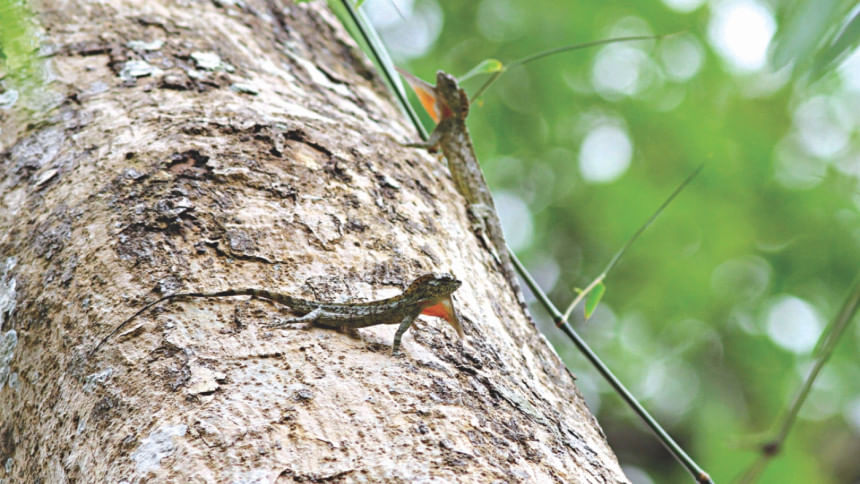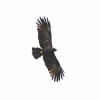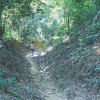Nature Quest: A day out with flying dragons

Almost tumbling down the damp and slimy slope, with thorny rattan snagging my arms, I struggled to keep my balance under the weight of my camera and tripod. I stopped to check on my two other companions, who were carrying even heavier equipment. They seemed fine but their eyes reflected disappointment, as they missed a rare opportunity to take a photo of the white-cheeked partridge. Although I was fortunate to capture the species in frame, we were actually looking for another bird, called the long-tailed minivet. Knowing that there is no certainty in birdwatching, we were keen to take every chance of having a glimpse of the species.
In the dark-green forest patches, sudden appearance of skinks on the forest floor, silent departure of the vivid butterflies from nearby undergrowth, comical actions of primates above and mesmerising bird songs have always fascinated me. But today, for some unknown reasons, the forest seemed unfamiliar with unusually fewer appearances of life.
With time the serene sunlight, peeping through the thin leaves, was becoming increasingly harsh. I stopped to catch my breath, looking around to find a suitable place to rest for a while. As we were discussing about not finding anything of interest so far, I noticed some arboreal locomotion. Curiosity got the better of me, and my mind relentlessly tried to identify the creature. My friends noticed my restless eyes and asked me about the excitement. I unknowingly uttered: "I am not sure but [it] could be a flying lizard!"
In no moment, they were all set to take it down with their camera guns. It made another leap from the tree, glided through the dense canopy and landed on a fig tree. Even though all of us were ready to capture its movement in frame, we were mesmerised to witness the breathtaking wonder of nature. A lizard is flying, you must be kidding!
Over 40 species of gliding or flying lizards (genus Draco) are native to Southeast Asian forests and cannot be found anywhere else in the world. These flying reptiles have a widespread distribution from India to eastern Indonesia. Amongst the two species of flying lizards of Bangladesh, the spotted flying lizard, Draco maculates, occurs in the hill forests of Sylhet and Chittagong divisions.
Now, what makes these lizards fly like dragons? Fascinatingly, it uses its skin along the sides of the body. When it jumps off a tree, it merely spreads its spare skin, which acts as wings. Well, they can't really fly like birds or bats, but they can glide up to 30 feet. It was an incredible experience for the three of us to witness two dragons gliding from one tree to another.
Within a few moments the lizards disappeared into the surroundings, with their charismatic camouflaging ability. It did not take us too long to spot the lizards again, but this time, different acrobatics amused us. They were looking at each other and puffing out their yellowish-orange throats while their wings were folded against their bodies. While not foraging, these diurnal, arboreal and ant-eating lizards spend most of their days sitting head-up on large tree trunks.
Previously, flying lizards could be spotted throughout greater Sylhet and Chittagong regions, but lately they have disappeared from much of their former ranges due to extensive deforestation in Bangladesh. These rare reptiles are still flying through the canopies of our remaining hill forests, but for how long?
The writer is a Conservation Biologist, currently working on threatened species conservation and research in Bangladesh and abroad.

 For all latest news, follow The Daily Star's Google News channel.
For all latest news, follow The Daily Star's Google News channel. 








Comments